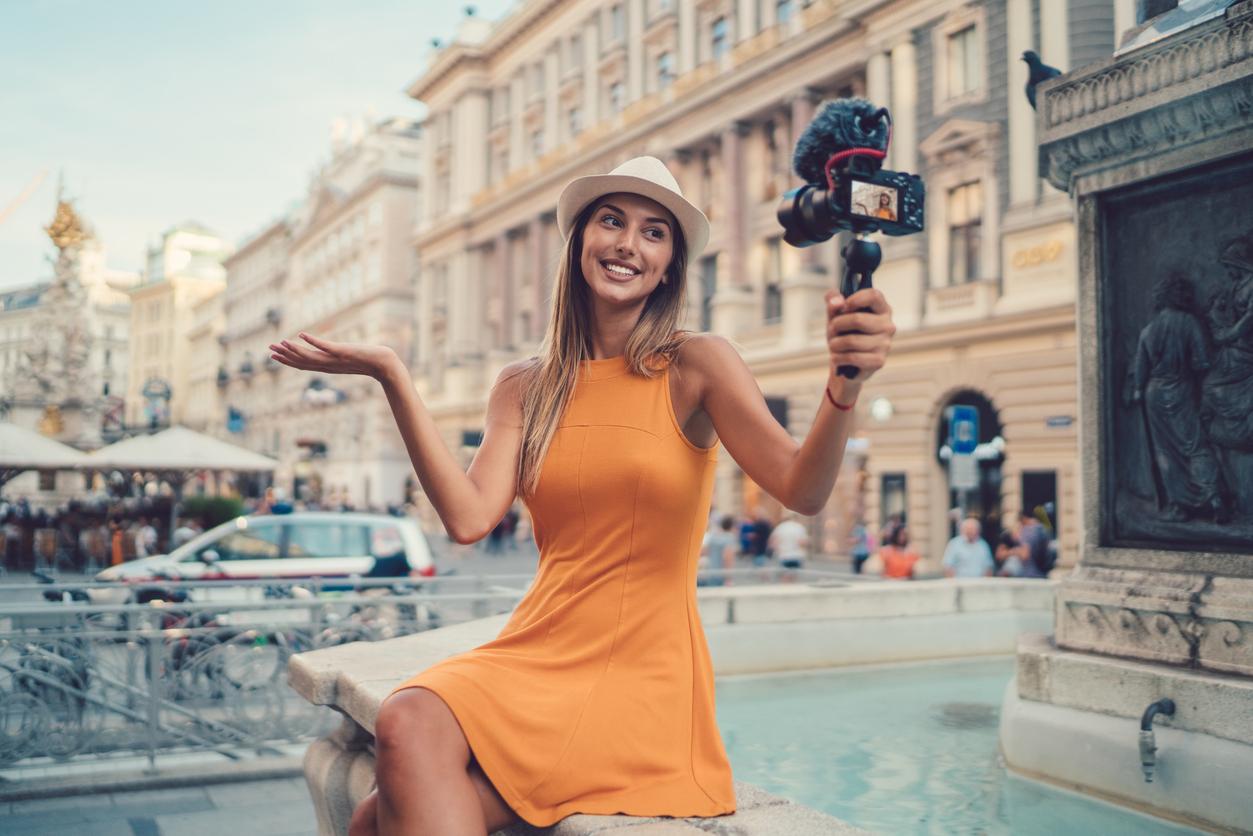There is still a lot of uncertainty about the strategies influencers use to promote tourist destinations or brands. This is why we commissioned a study by Arteveldehogeschool in the context of the Belgian Travel Blog Awards 2024. The study uncovered surprising results and showed that influencers often feature themselves too prominently in their content, leaving the destination and the client's offerings underexposed. An eye-tracking experiment revealed that when the influencer is not prominently featured, the likelihood of recall of the commercial partner increases by as much as 38%. So engaging influencers for travel brands or destinations should be done with caution and deliberation. Discover the key insights from the study below.
Influencers are increasingly being used to promote brands, including in the travel industry. "Because of the intangible nature of travel, many people rely on information, opinions and recommendations that are ubiquitous on social media. Influencers can play an important role here by sharing personal stories and authentic travel experiences," explains Jo Thuys, Managing Partner of Thx.agency.
An analysis of 74 sponsored Instagram posts identified exactly how influencers do this. They appear to use a wide range of visual and textual strategies, with the visibility of commercial partners varying widely. Travel destinations are typically mentioned at the top of the post through a location tag (77%) or in the caption of the post (83%). In the case of a tour operator as a sponsor, the mention usually happens at the bottom of the post in the format of a hashtag (79%). Since not everyone scrolls down that far, this can be detrimental to the visibility of the sponsor, especially in a volatile environment like Instagram. In fact, in 12% of the posts, the commercial partner was not visible at all.
"Remarkably, in almost 70% of the posts studied, the influencer was featured in the photo. This introduces an important risk, namely that the attention goes mainly to the influencer and not to the commercial partner." states Dr. Marijke De Veirman, senior researcher at Arteveldehogeschool.
Influencers attract attention to themselves, at the expense of the commercial partner
Previous research showed that using famous people in advertising campaigns can lead to what is known as a vampire effect. This means that the famous person draws so much attention to themselves that the brand is overshadowed, so people will fail to remember the brand. To investigate whether this also applies to influencers, an eye-tracking study was conducted with 115 young adults, varying in how prominent the influencer was in the picture.
When there was an influencer featured in the photo, they managed to attract up to 62% of the total visual attention. But surprisingly, the presence of the influencer in the photo did not lead to more attention to the post or a more positive attitude toward the post. The fact that the influencer attracted so much visual attention also made participants less likely to remember the commercial partner mentioned in the caption. Participants who were shown a post that did not feature the influencer, spent twice as long looking at the tagged sponsor in the caption. This increased the likelihood of recall by 38%. The less prominent the influencer was in the picture, the more likely they were to remember who the commercial partner was.
Importance of caption not to be underestimated
For many players in the travel industry, the question remains how to make the best use of content created by influencers. It seems to be a matter of balancing between recognizability of the influencer and sufficient commercial visibility for the sponsor. It is important to put enough emphasis on the caption of the post, where visibility can be increased by mentioning the commercial partner at the top of the caption. Visibility increases the probability of visual attention, which leads to better brand recall and ultimately increases the likelihood of a purchase. "Influencer marketing remains interesting for the travel industry, provided the influencer does not monopolize the entire visual attention. A clear briefing is crucial to adequately deploy influencers and make them profitable," concludes Jo Thuys.
More about the research
Collaboration with influencers has become increasingly common in the travel industry in recent years. However, little is known about the strategies used by travel influencers. A content analysis of 74 sponsored Instagram posts revealed a dominant self-focused visual approach. A pre-recorded experimental eye-tracking study (N=115) revealed a strong vampire effect. Influencers who were prominent in the Instagram post attracted 62% of visual attention, without resulting in more overall visual attention or more positive attitudes. The vampire effect affected the degree of recall of the commercial partner. Participants in the condition without an influencer looked twice as long at the tagged sponsor in the caption, resulting in a 38% higher likelihood of recall. The results thus highlight a key challenge the travel industry faces when working with influencers: the potential overshadowing of commercial messages by the influencers who place themselves at the center.
Want to know more about influencer marketing? Contact Jo Thuys, Managing Partner Thx.agency, jo@thx.agency, +32 473 86 46 15.



